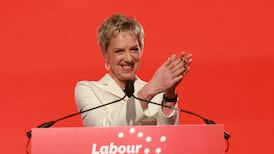For decades Irish politics was defined by the 2½ party system – two big parties, Fianna Fáil and Fine Gael, and the smaller Labour Party. The established order was torn asunder in 2011. For some time now, the opinion polls have been pointing to even further party political upheaval at the next general election. Forming a stable government with a coherent policy agenda appears, at this point in time, as if it may be problematic.
Public opinion may well shift again as the election approaches, especially as consideration about who should be in the next government becomes a real question for many voters as opposed to the hypothetical one that it is now. But even at this stage, we know that Fine Gael will, most likely, be the largest party in the next Dáil and will, in all probability, lead the next government.
Having excluded Sinn Féin as potential partners, Enda Kenny and his colleagues may have two options in terms of forming a coalition government. First, they could be hoping to deal with a combination of what the Labour Party manages to salvage and what is likely to be a very sizable “Friends of Fine Gael” grouping on the independent benches. Second, they may strike a deal with Fianna Fáil.
Two of the likely contenders to succeed Enda Kenny as Fine Gael leader – Leo Varadkar and Simon Coveney – have recently spoken about their willingness to consider a coalition arrangement with Fianna Fáil.
The traditional argument – put out by both parties – that their coming together in government would be bad for democracy given their number of Dáil seats – no longer holds. Fine Gael and Fianna Fáil will probably once more rank as the two largest parties in terms of seats won after the next election. But, unlike previously, they will hold fewer of the overall seats in the Dáil given the emergence of Sinn Féin and small party members/Independents as significant parliamentary players.
Economic policies
Ideology would not prevent a Fine Gael-Fianna Fáil alliance being formed. Despite protests about policy differences, the two parties are essentially different sides of the same pro-European, pro-enterprise coin. There was little in Micheal Noonan’s budget last October that his Fianna Fáil counterpart Michael McGrath could fundamentally disagree with. Perhaps a few million euro more in one policy area over another, perhaps a difference on prioritisation or timing of delivery, but the economic policies of the respective parties remain essentially the same. Similarly there is little difference between the parties on social/moral issues. This fact is substantiated by the debate on sexual equality. The last Fianna Fáil-led coalition introduced civil union legislation, while the Fine Gael-led coalition is backing same-sex marriage.
In terms of agreeing a programme for government, Fine Gael and Fianna Fáil Ministers could sit around the Cabinet table together. They might not sit comfortably on every issue but there is sufficient pragmatism in both parties to ensure such an arrangement would be workmanlike.
So what might stop this grand coalition emerging? In truth, the only impediment would be the political needs of the two parties, and in particular those of Fianna Fáil.
Fine Gael became the largest party for the first time in 2011. But Kenny’s party has not yet shown it has the ability to become the dominant party in the State in the manner that Fianna Fáil ruthlessly pursued electoral success for almost 80 years. Fine Gael’s dreadful result in the last presidential contest – a mere eight months after its general election triumph – is a case in point. If Fine Gael is to cement its dominant position, it needs another term in power irrespective of if that means doing a deal with its historic rival.
A second successive term – the first time the party would have had one – would also help the next Fine Gael leader. Taking over the leadership while the party is in government, and with Fianna Fáil in a subservient position, would be an excellent inheritance from Kenny to his successor.
FF history
Conversely, the likely terms on offer mean it may not be in Fianna Fáil’s long-term interests to return to government just yet. There are always dangers for the smaller party in a coalition arrangement. Since it first embraced coalition in 1989, Fianna Fail has written the handbook on how to deal with smaller coalition partners. It has seen how Labour, the Progressive Democrats and the Greens fared in different coalitions led by Fianna Fáil taoisigh.
Against this background, the question is whether Fianna Fáil would be happy to see Micheál Martin become tánaiste after the next election. The party may be better advised to hold out in the expectation that, at a subsequent contest, Martin, or his successor, might emerge as taoiseach in a coalition where Fianna Fáil was the largest party.
Fianna Fáil’s poll ratings continue to flat line but local election successes in different constituencies last year point to an ability to secure 30-35 Dáil seats.
Internal political considerations most likely dictate that this slow but steady rebuild from the debacle of 2011 necessitates another term in opposition. There will be much talk about a grand coalition in the months ahead. But patience – and Fianna Fáil’s traditional pragmatism – will most likely override any temptation to do a deal with the devil.
Kevin Rafter is an associate professor of media and politics at DCU and the author of The Road to Power: How Fine Gael Made History (New Island, 2011)








